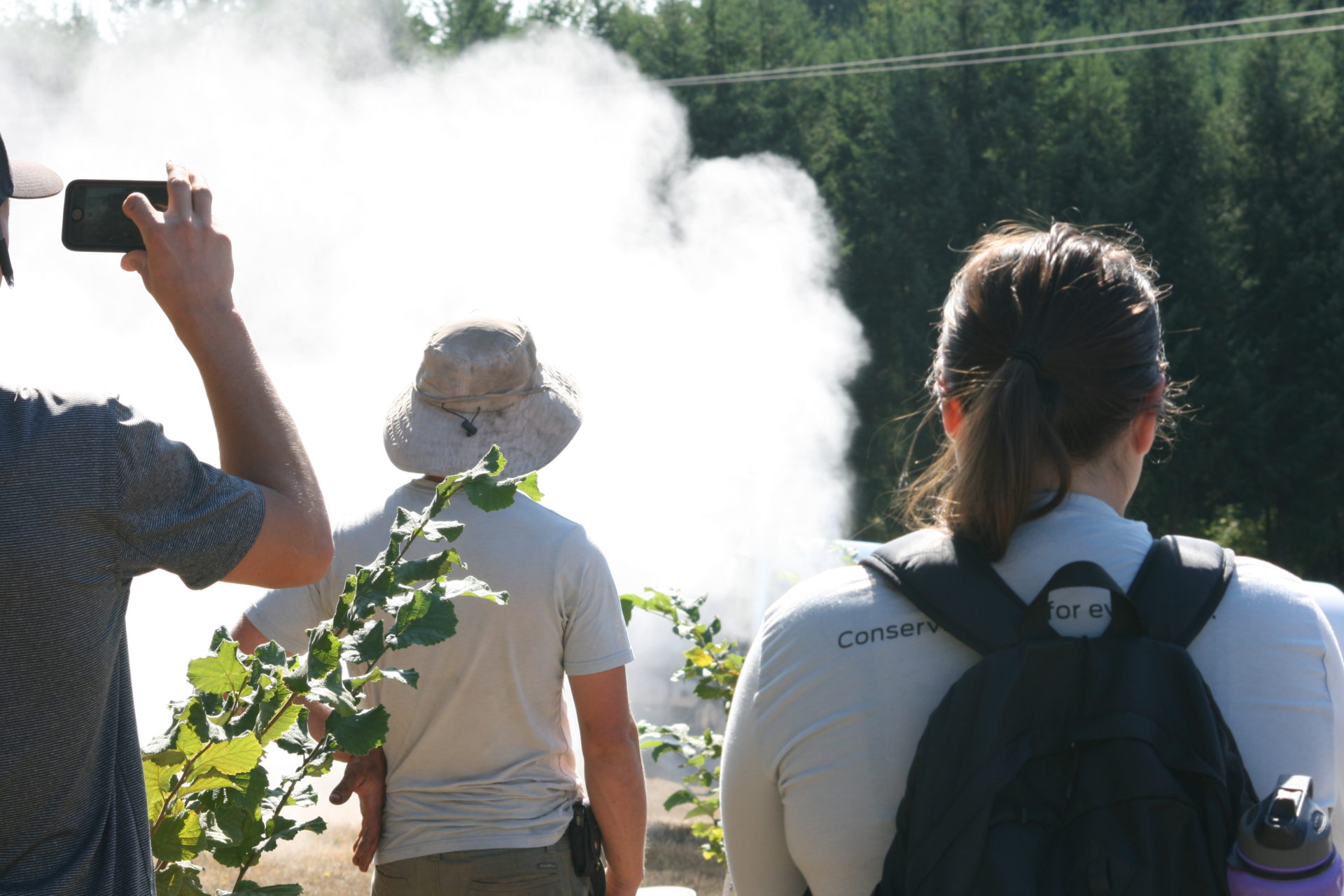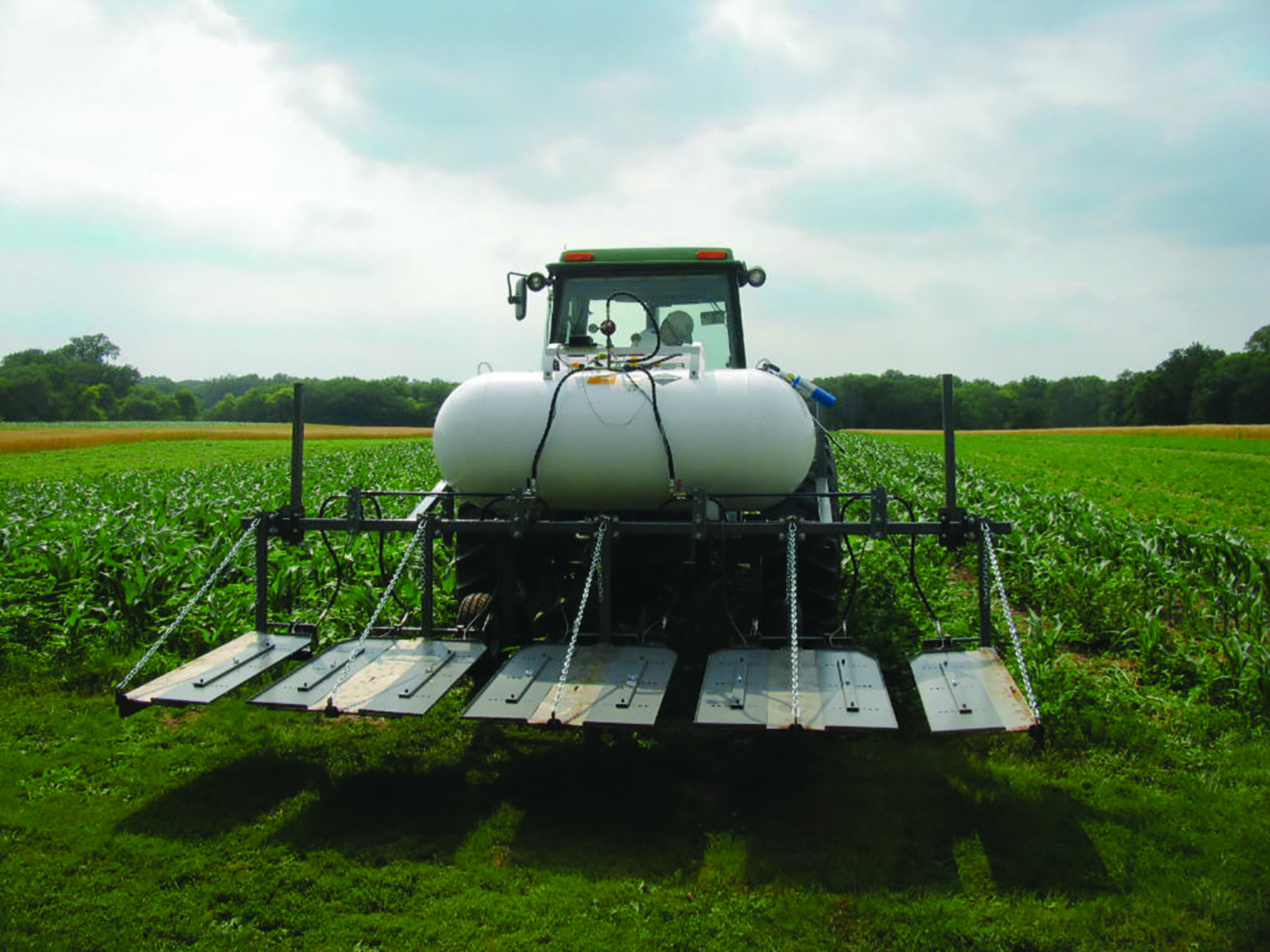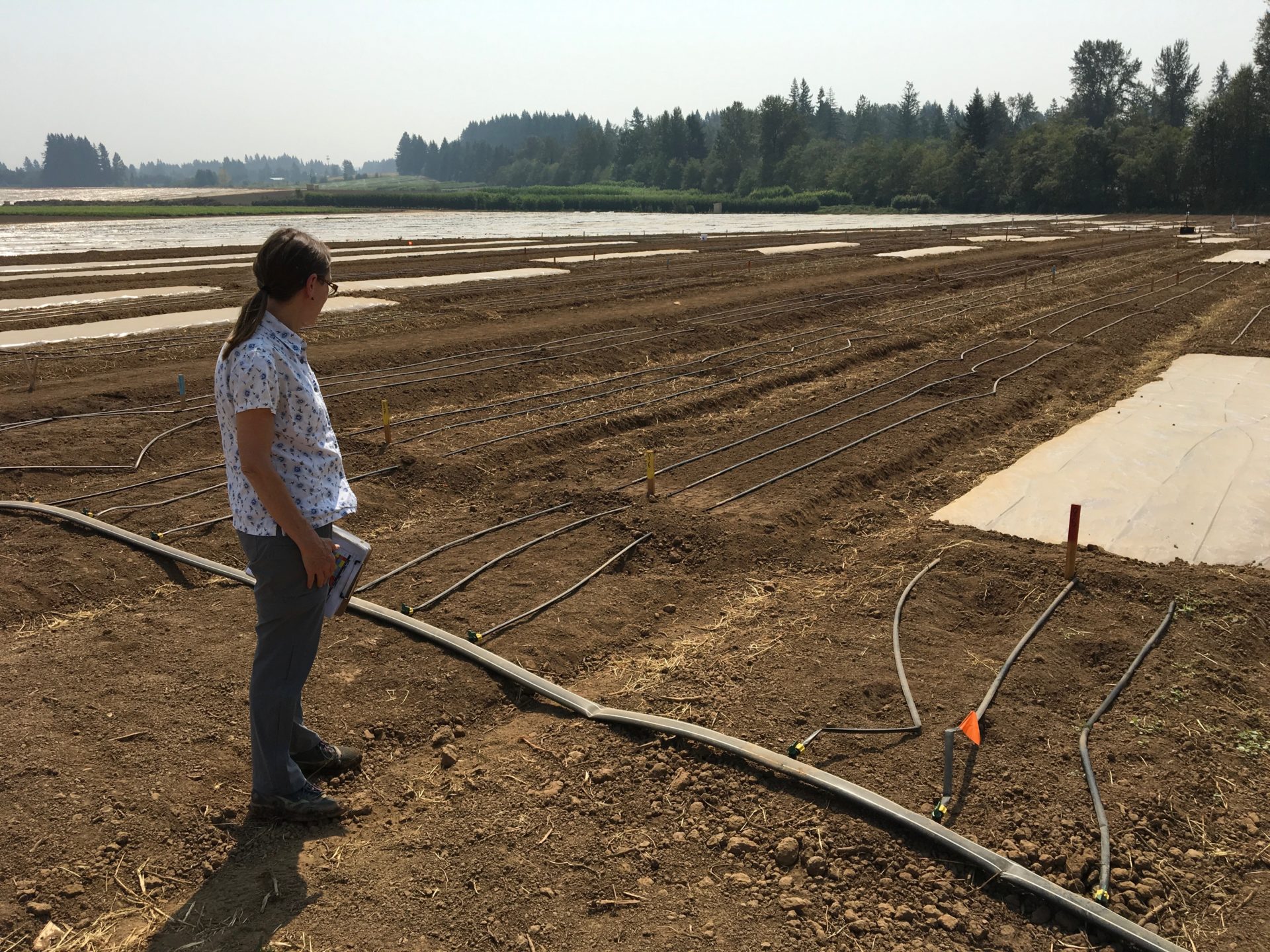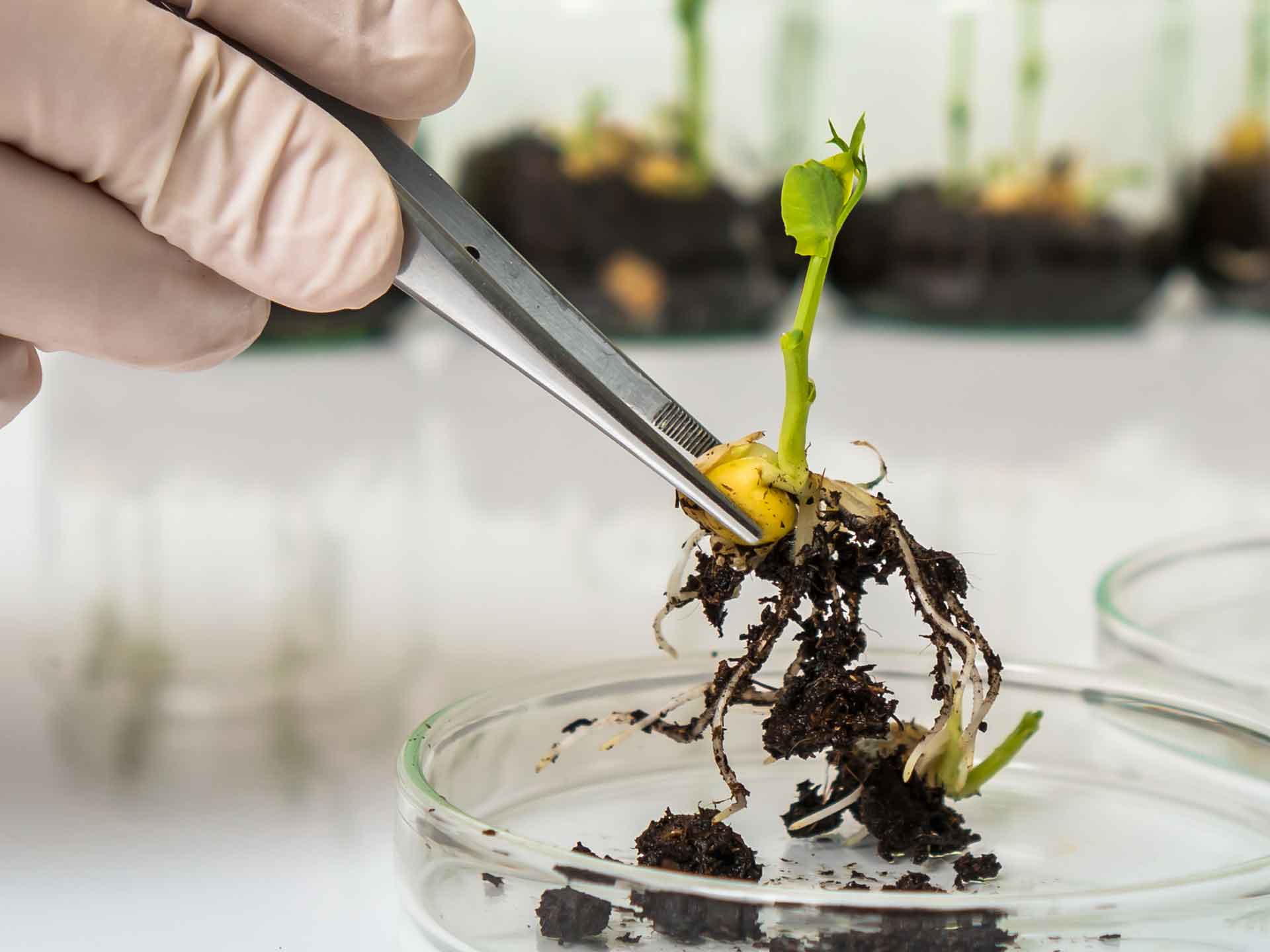Is using an electrostatic air sprayer better for the environment than using a conventional airblast sprayer?
“It’s more controlled,” which reduces drift and runoff, said Willie Hartman. Hartman is the president of On Target Spray Systems, out of Mt. Angel, Oregon. Electrostatic sprayers are also less wasteful, according to Hartman. They use less horsepower (hp)—only half as much, which cuts diesel fuel usage by half. Less spray is wasted, and it takes less tank fills, which saves labor.
How does an electrostatic sprayer compare to a conventional airblast sprayer?
“It uses less water. Has electrostatic wrap around. It’s still the newest next generation. Others electrostatic sprayers are from the 50s,” Hartman said.
The Concept
The concept is simple. Think in terms of metal bits drawn to a magnet, dog hair to clothes or dust to venetian blinds. It’s the same concept that draws the spray and water droplets to surround and cling to all the parts of a plant.
The basic idea has been around for a while, and is widely used by cleaning businesses. The electrostatic technology works well with antiseptic cleaners to sterilize hard-to-reach corners and crevasses.
Electrostatic sprayers are a three-part system: air, liquid and electrical. “We use compressed air and atomize the drops,” Hartman said. The drops break down into 58-billion droplets per gallon of water.
“Trees are grounded” said Don Hatai, On Target customer service support engineer. Hatai gave an electrostatic sprayer demonstration during an organic hazelnut farm tour at Skydance Farm in Sherwood, Oregon. “Charged droplets repel each other and are attracted to the grounded tree,” Hatai explained from the orchard. So, the electrostatic sprayer can get full, uniform coverage—around an apple, for example, or around a strawberry or a hazelnut. It will also coat the underside of leaves, which is often where insect pests hang out.
Can you use all fertilizer, pesticide and herbicide sprays through the unit? “Wetable powder and oils can go through the sprayer,” said Hatai.
Someone attending the farm tour asked about sulphur. “Sulphurs are harder,” Hatai said. “Have to water it way down.”
After Hatai’s demonstration with plain water, several of the orchard tour goers checked the top and bottom of leaves on both sides of the trees to see if the electrostatic sprayer had, indeed, wet the entire surface on both sides of the aisle. It had.

The Science
In science, when “like” electrical charges repel and opposite charges attract, it’s known as Coulomb’s Law. (a coulomb is a unit of electric charge). It’s also known as the law of attraction, or powder coating.
A spray droplet from a conventional airblast sprayer is around 250 microns. With an electrostatic sprayer, the spray droplets are atomized down to 50 to 80 microns. Right before the mist exits the nozzle, it’s given a positive charge.
The electrically-charged droplets are attracted to the plant, which is grounded. The droplets of mist—in theory, anyway—stick to the plant and don’t runoff onto the ground the way a bigger, 250-micron droplet would be more prone to do.
Cost Savings for the Farm and Orchard
Sprays: The average spray use needed with an electrostatic sprayer is 50 gallons to an acre in mature orchards, and 5-25 gallons an acre on young orchards, which adds up to approximately a 25 percent savings in spray costs.
Because of the lower horsepower needed for an electrostatic sprayer, compared to a conventional airblast sprayer, diesel usage is cut in half. Growers can utilize less expensive tractors.
Cost per Unit
The cost per spray unit is $15,000 to $65,000, depending on the size of the sprayer from On Target Spray Systems. A 400-gallon rig will spray 13 acres per tank, and costs approximately $40,000.
If you have a large operation then naturally you’ll see more cost-savings benefits. Several things to factor in to cost versus savings: How many acres are you spraying? What do you spray? Do you have to pay for farm labor, or does labor come mostly from you and family members? That latter question begs to ask this one: What value do you put on your time, and on your family’s time?
Small farm operations would, of course, take longer to realize financial benefits from an electrostatic spray unit.

The Features
Electrostatic spray manifolds
Articulating boom.
Adjustable for all tree sizes. The adjustable towers are low profile. Taller towers are available for fruit trees.
Can adjust to spray from ground level to horizontal up to 30 feet.
12-15 pounds of air pressure.
10-15 pounds of liquid pressure.
The units are PTO operated and need only 45 PTO hp.
A 400-gallon sprayer will cover around 13 acres per tank. A 600-gallon sprayer will cover approximately 20 acres per tank.
Rate Controller
There’s a rate controller on all models. It gives an exact, precise application for growers, and makes it easy for the operator and manager. “It’s kind of expensive,” Hartman said, “but we put it on every single sprayer.”
For example, if the operator sets the rate controller at 50 gallons per acre, whether the driver goes fast, goes slow, or pauses, the rate controller will adjust accordingly.
“And that’s a big deal,” Hartman said. Conventional sprayers might cover three to four acres per tank. “Spray for twenty minutes and run back and fill again.” With an electrostatic sprayer, an operator might fill the tank in the morning and not have to go back to fill again until lunch.
Maintenance
Maintenance is simple, according to Hatai. Flush the system when you’re done, then run the air system to get rid of any moisture.
There’s a switch on the control panel to go from chemical spray to rinse water, Hartman said. “Don’t even have to leave your tractor.”
Farmers might say: Okay, all this is great news. What’s the part I need to pay attention to?
Hartman’s answer in three words: “Keep it clean.” If you do that you will be very happy.
Trials
On Target started out doing a lot of work with wine grapes, blueberries and strawberries. Electrostatic sprayers were especially useful with strawberries. The plants are so low, and with the leaves touching the ground it’s hard to get spray to the underside of the leaves.
The company is branching out into fruits and nuts.
On Target has been working in conjunction with Washington State University (WSU), according to Hartman. They’ve been doing some trials in cherry orchards with liquid pollination. A research scientist at WSU has discovered a way to keep cherry pollen alive in liquid. Electrostatic liquid pollen application is replacing dry pollen application due to better results.
Now On Target is doing work with almonds and pistachios in California. Last year they started their first initial trials with hazelnut pollination in Oregon.
“What I see is airblast sprayers have served the industry well for fifty or sixty years,” Hartman said. Since there are environmental concerns with spray drift and runoff, “The industry is looking for a solution to these concerns.”







